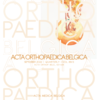Comparison of clinical outcomes of autologous bone graft versus pronator quadratus pedicled vascularized bone graft in the treatment of scaphoid nonunion
bone grafting; nonunion; non-vascularized; pronator quadratus pedicled vascularized bone graft; avascular necrosis
Published online: Jan 20 2023
Abstract
We aimed to compare the union rate and clinical outcome of autologous bone graft versus pronator quadratus vascularized pedicled muscle flap in treatment of scaphoid nonunion. Forty patients with a diagnosis of scaphoid nonunion who underwent unilateral pseudarthrosis surgery were included in this study. Notably, the scaphoid nonunion was unilateral, and the contralateral wrist was asymptomatic with normal function, per the physical and radiological examinations. Pronator quadratus vascularized pedicled muscle flap was used in 16 patients (group 1), and autologous bone graft was used in 24 patients (group 2). Patients were compared used Scapholunate angles, Natrass carpal height ratio and Mayo wrist score pre and postoperatively. Fifteen of the 16 (93.3%) patients in group 1 and 19 of the 24 (79.2%) patients in group 2 achieved bone union. Four of twelve patients in group 2 with avascular necrosis (AVN) and one of eight in group 1 with AVN were not able to achieve union. The group 2 (34%) had higher nonunion rate than group 1 (12%) in AVN patients. The scapholunat angle was significantly decreased and the Natress ratio was significantly increased postoperatively compared to the preoperative measurement in both group. There was no statistically significant difference in the postoperative measurement. The postoperative Mayo wrist score showed no statistically significant differences between both groups. The pronator quadratus vascularized pedicled muscle flap was superior to non-vascularized bone grafting in the treatment of scaphoid nonunion with AVN. However, management of the patients without avascular necrosis is not requiring the vascularized pedicled muscle flap technique.
